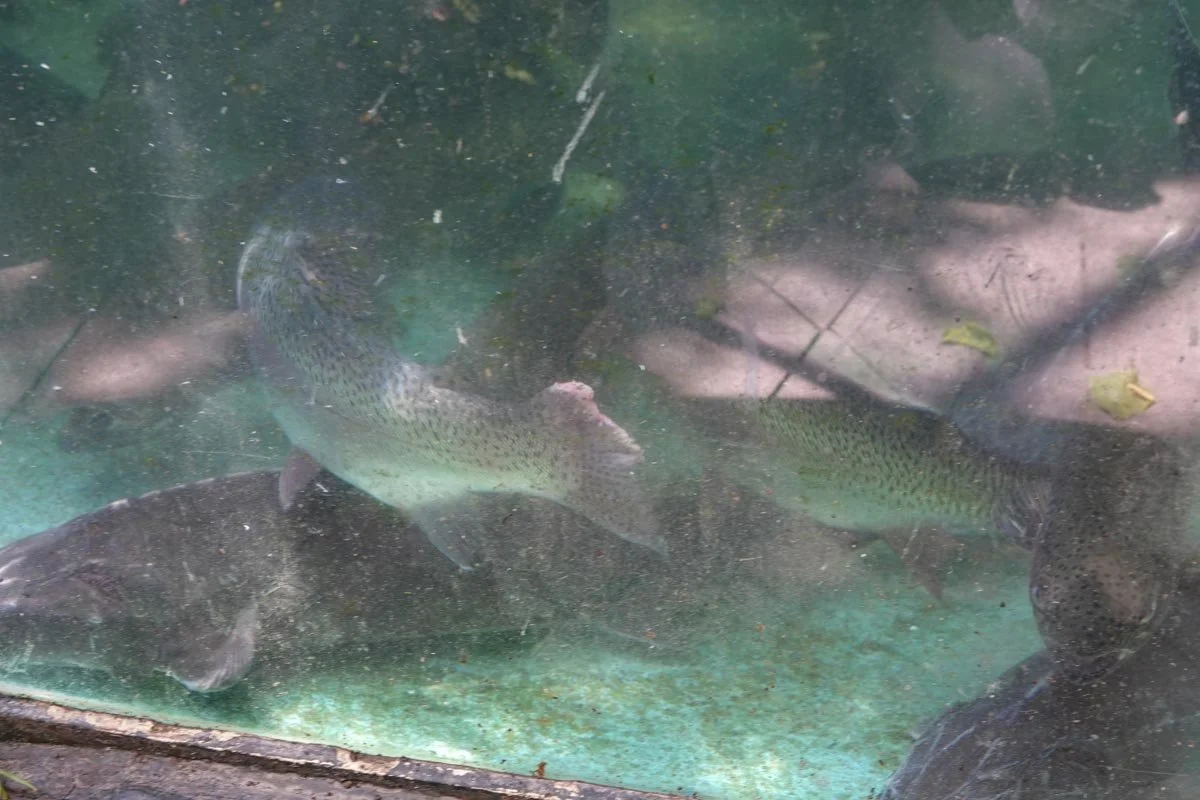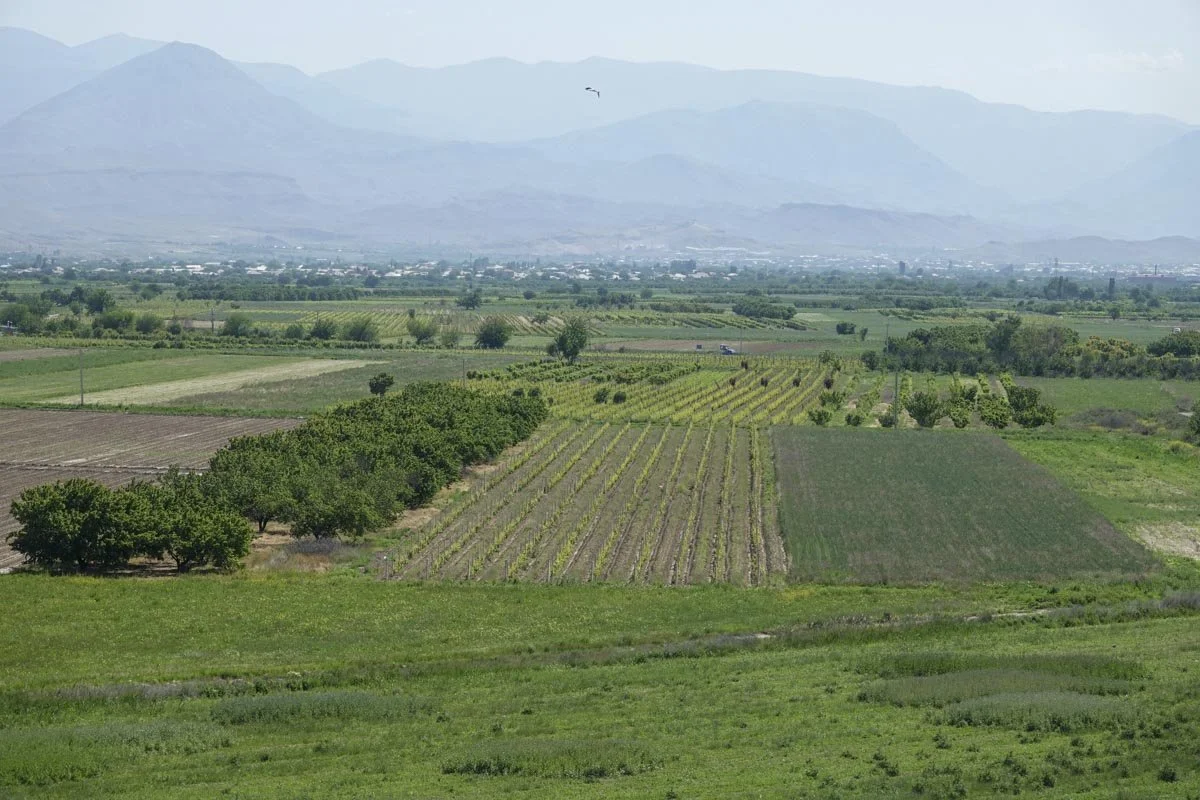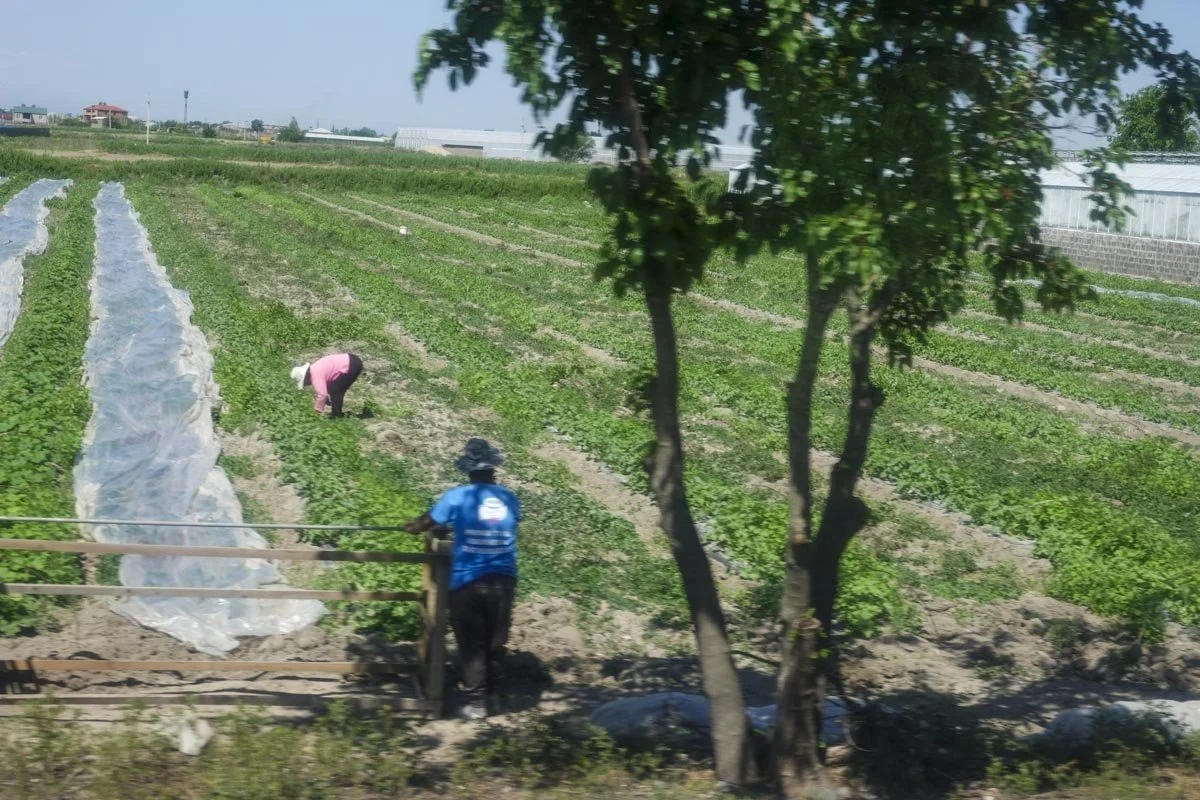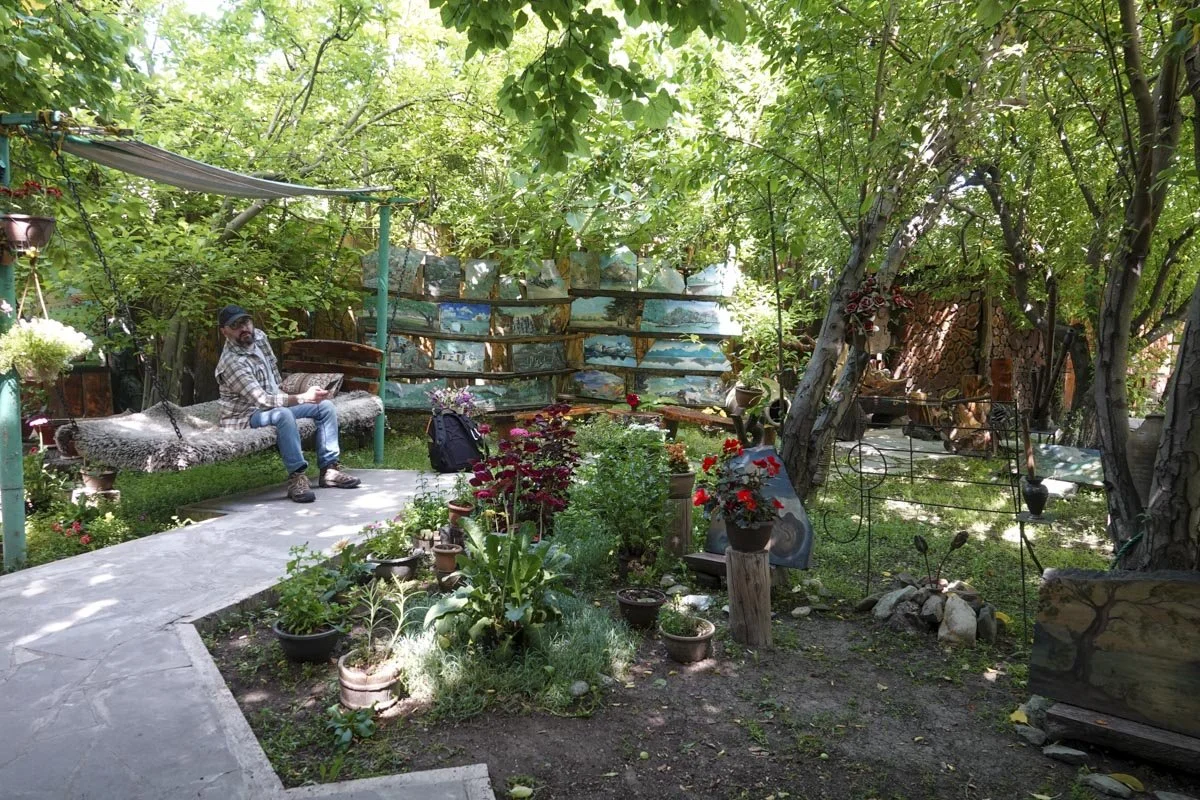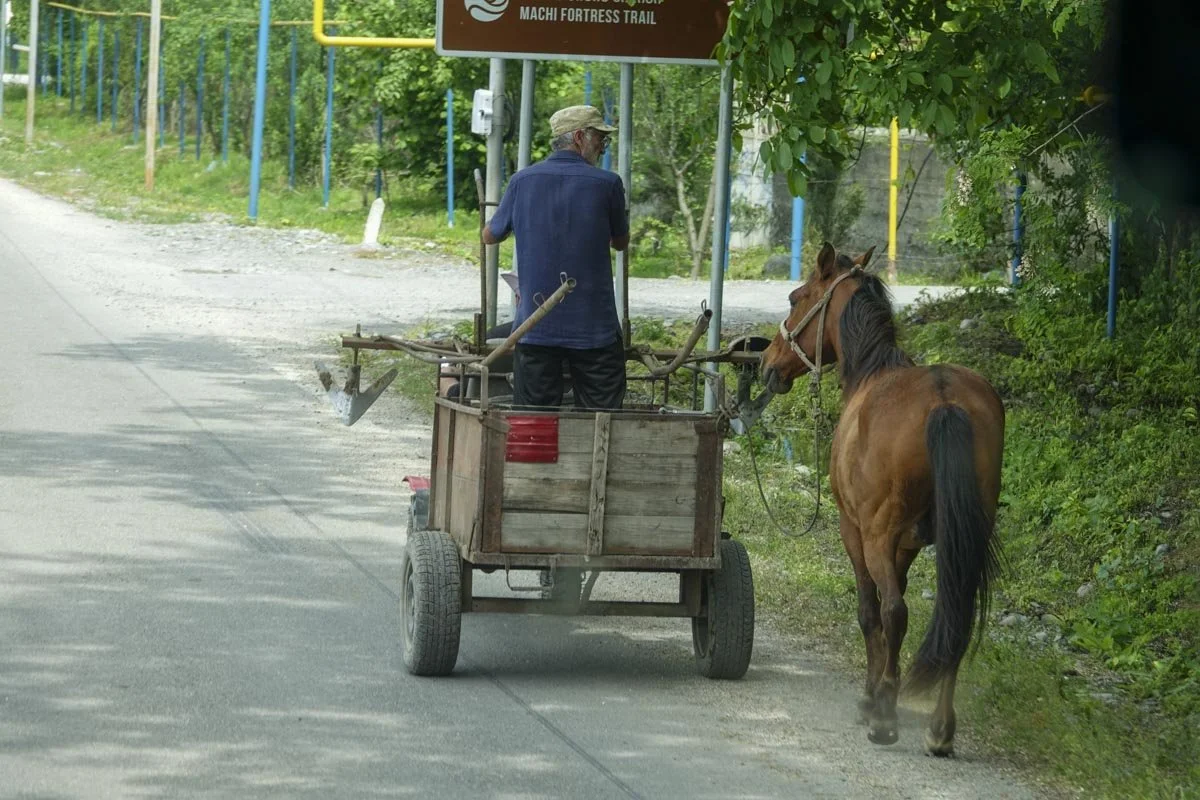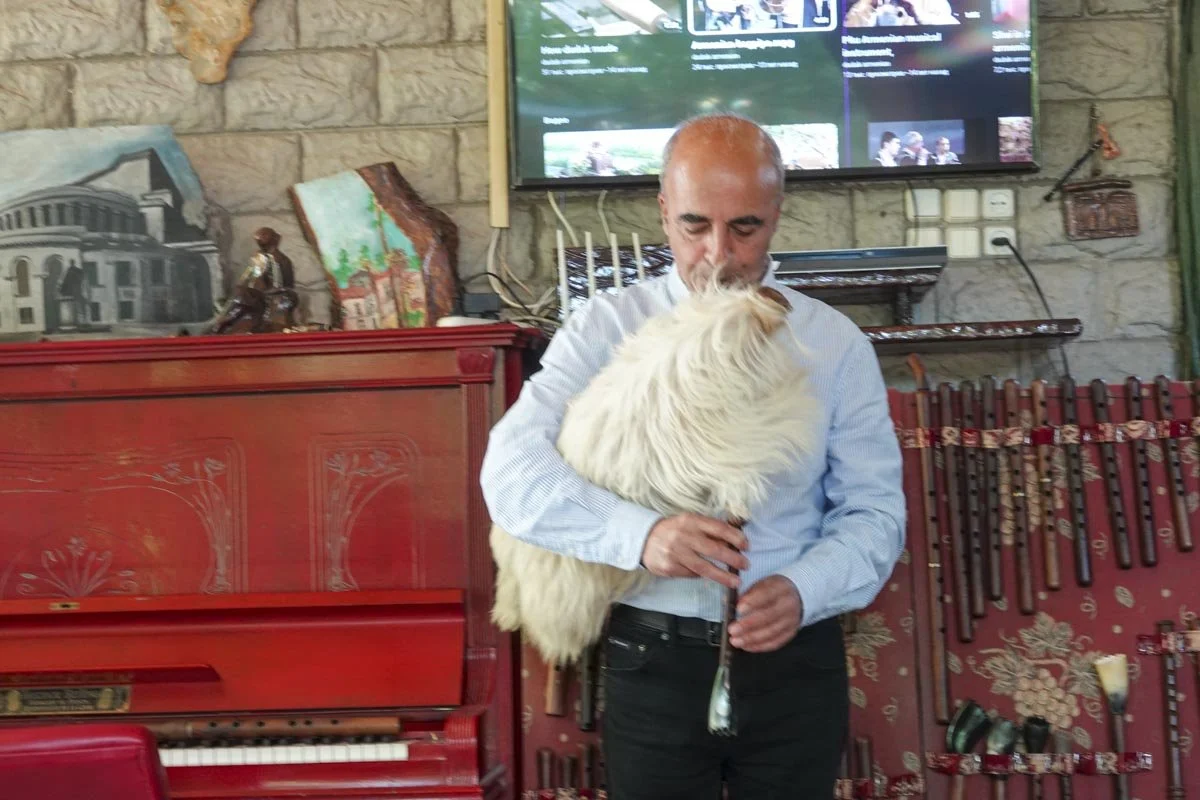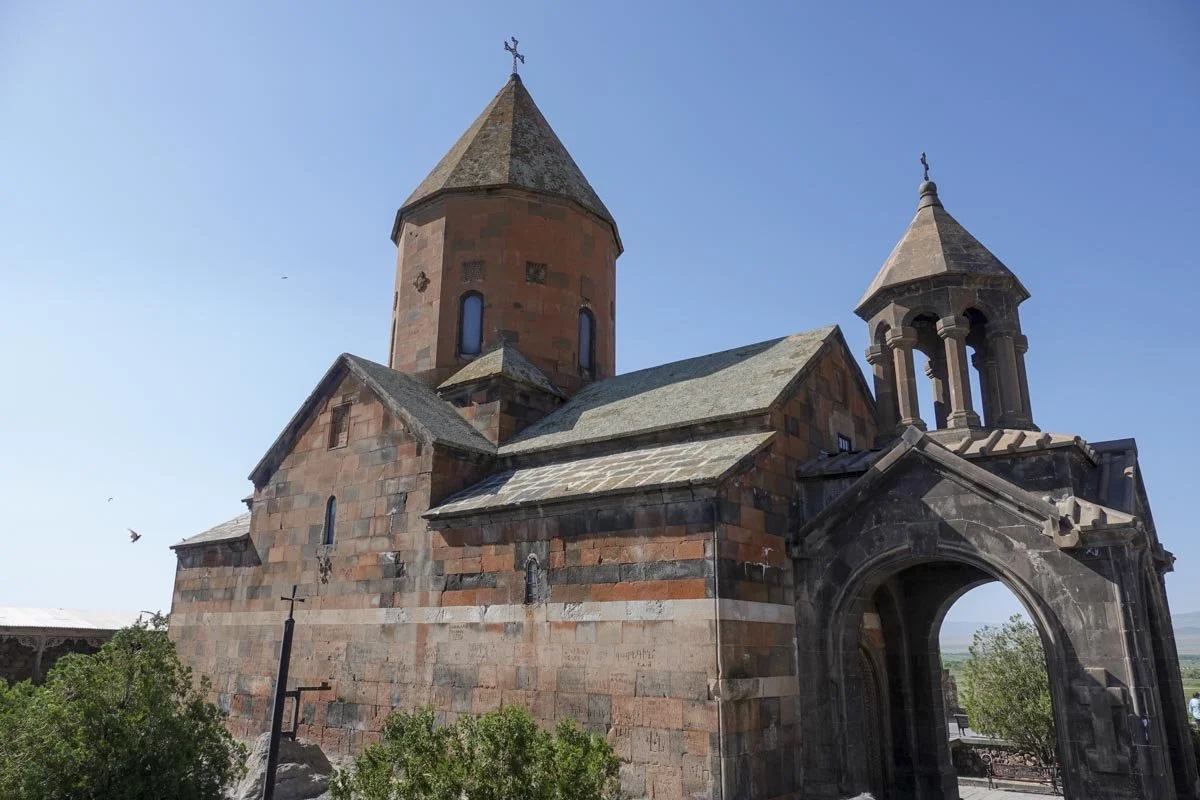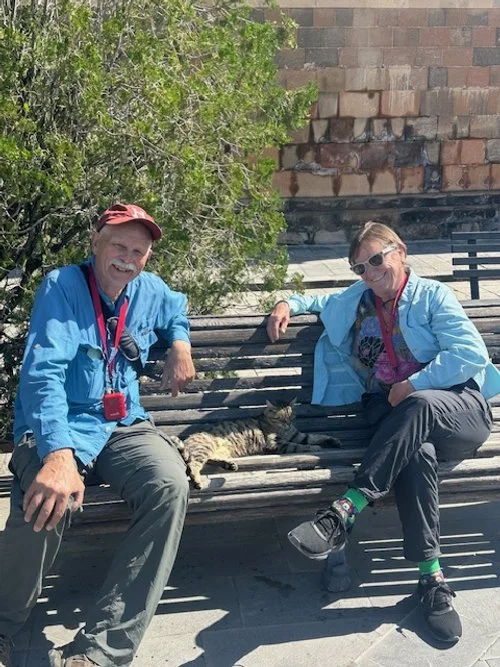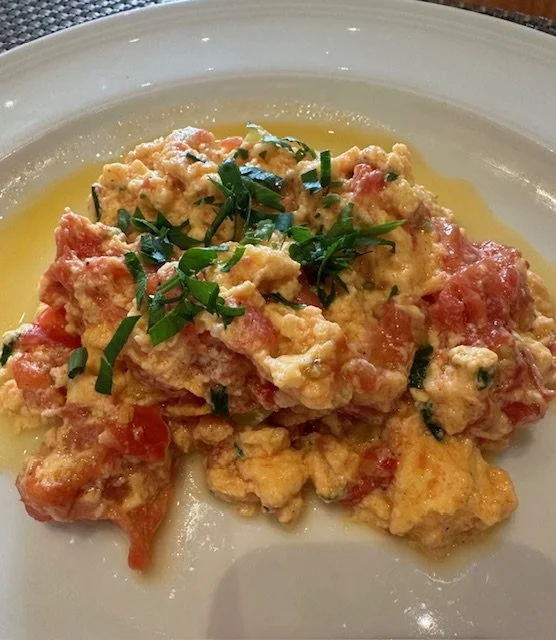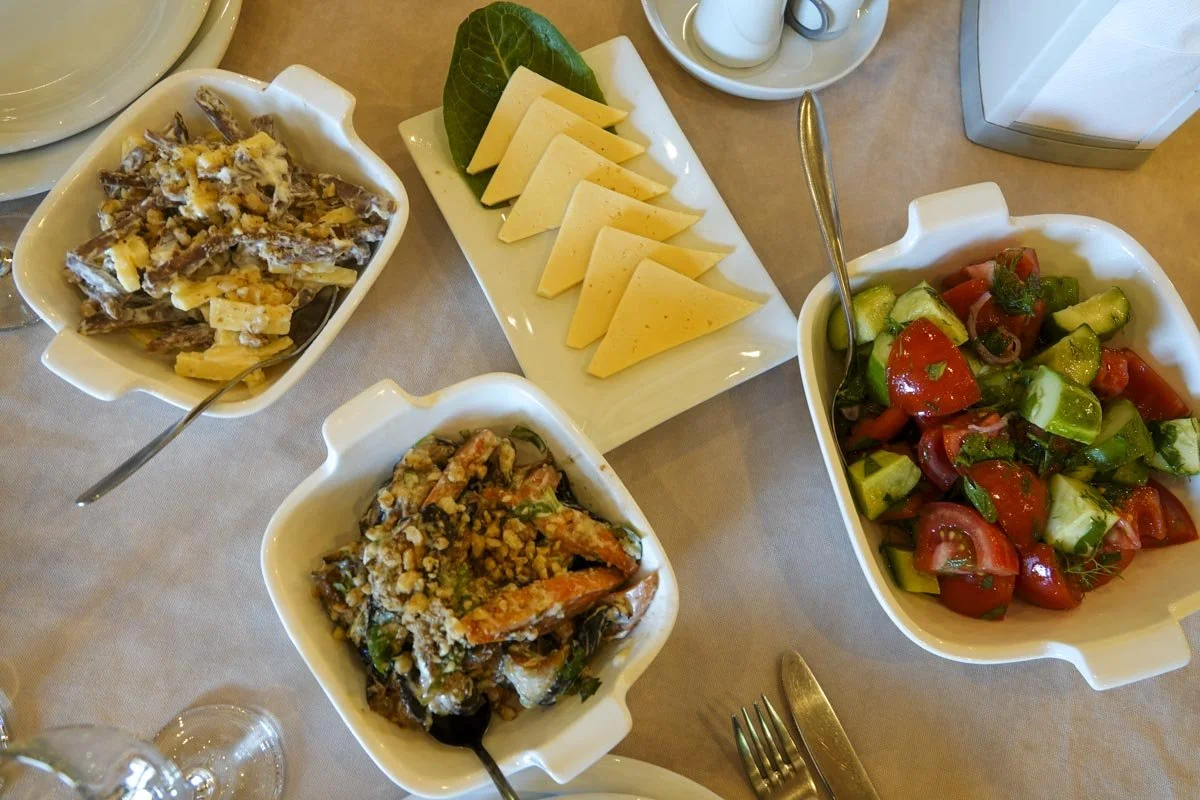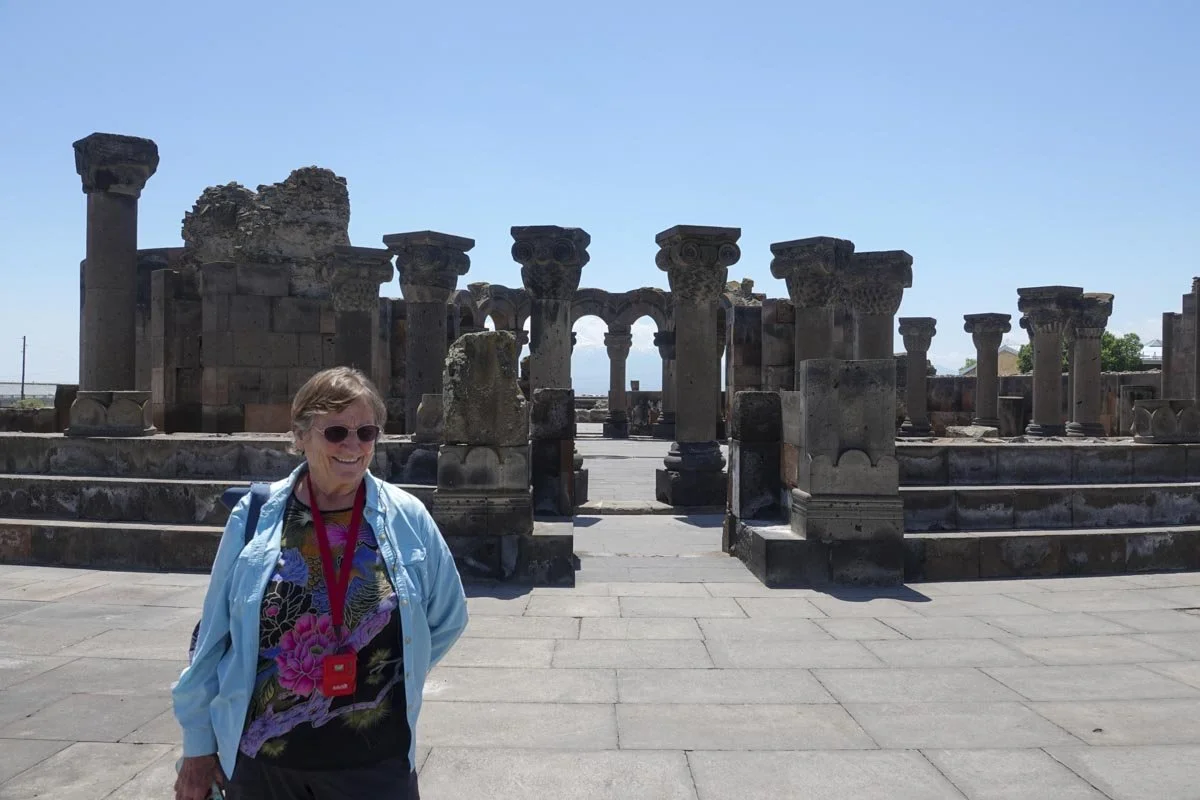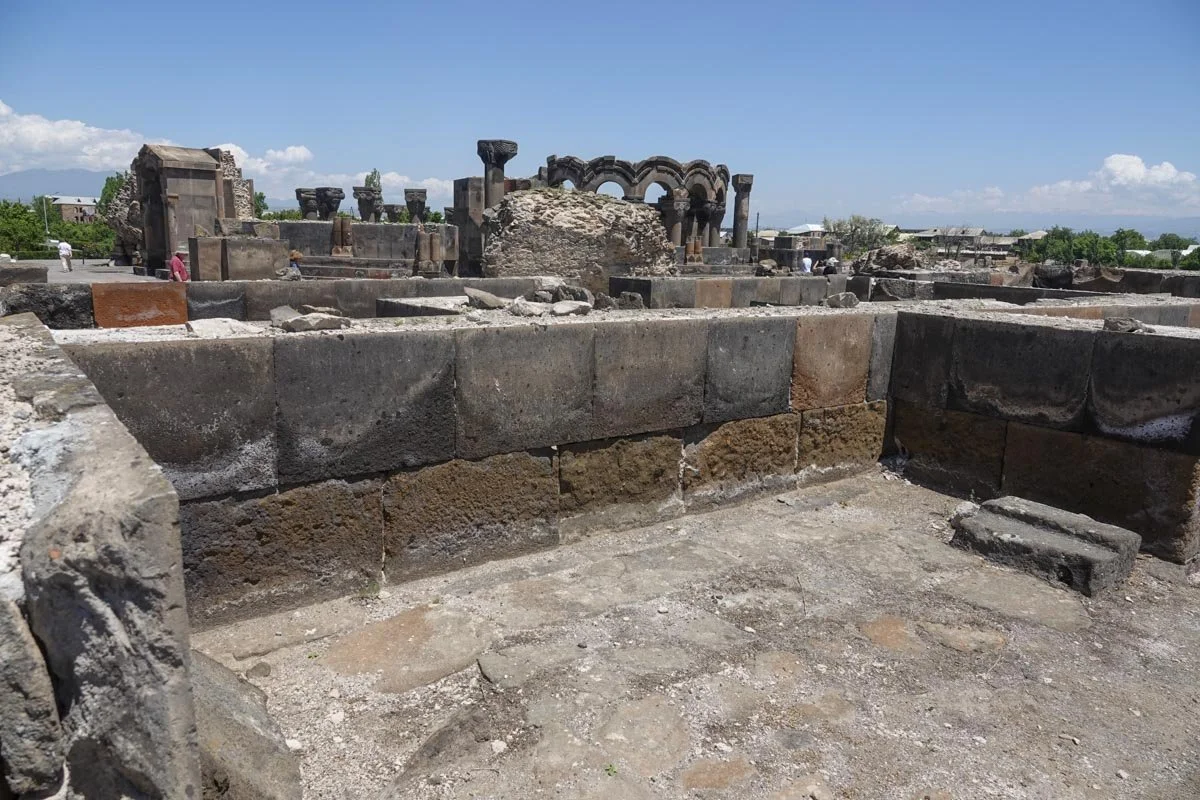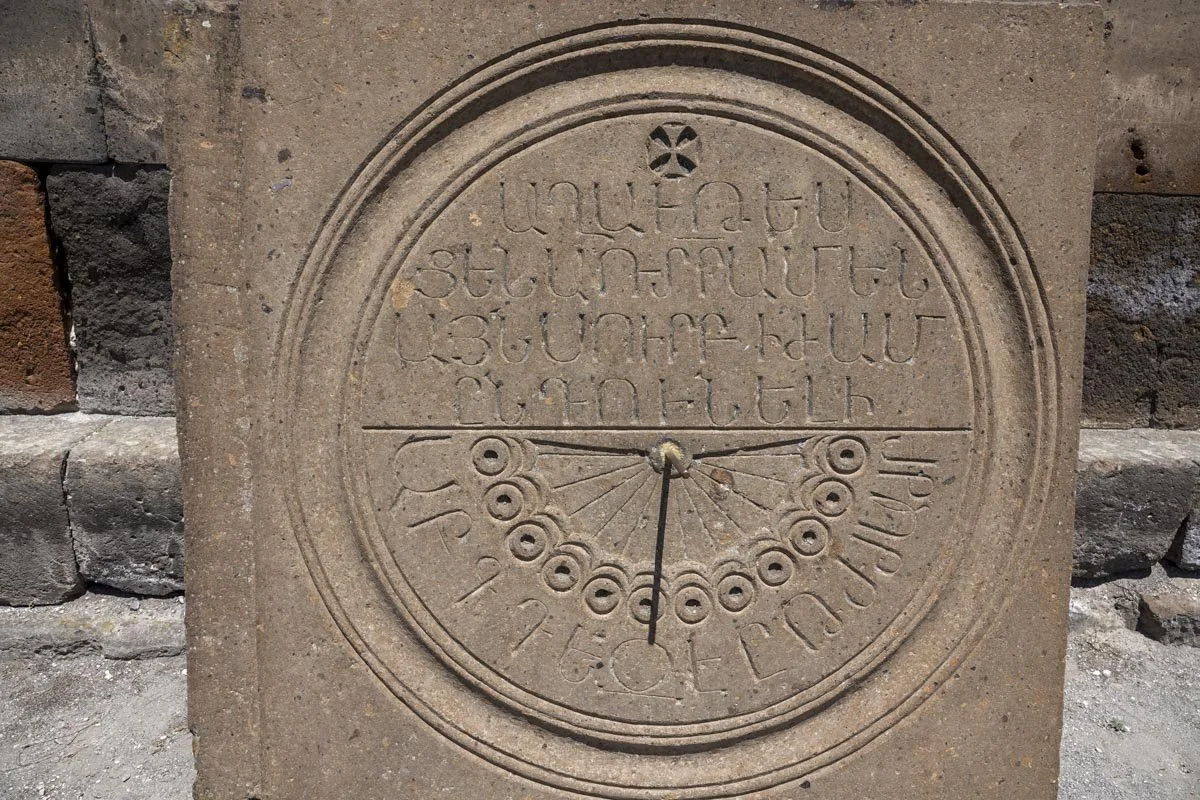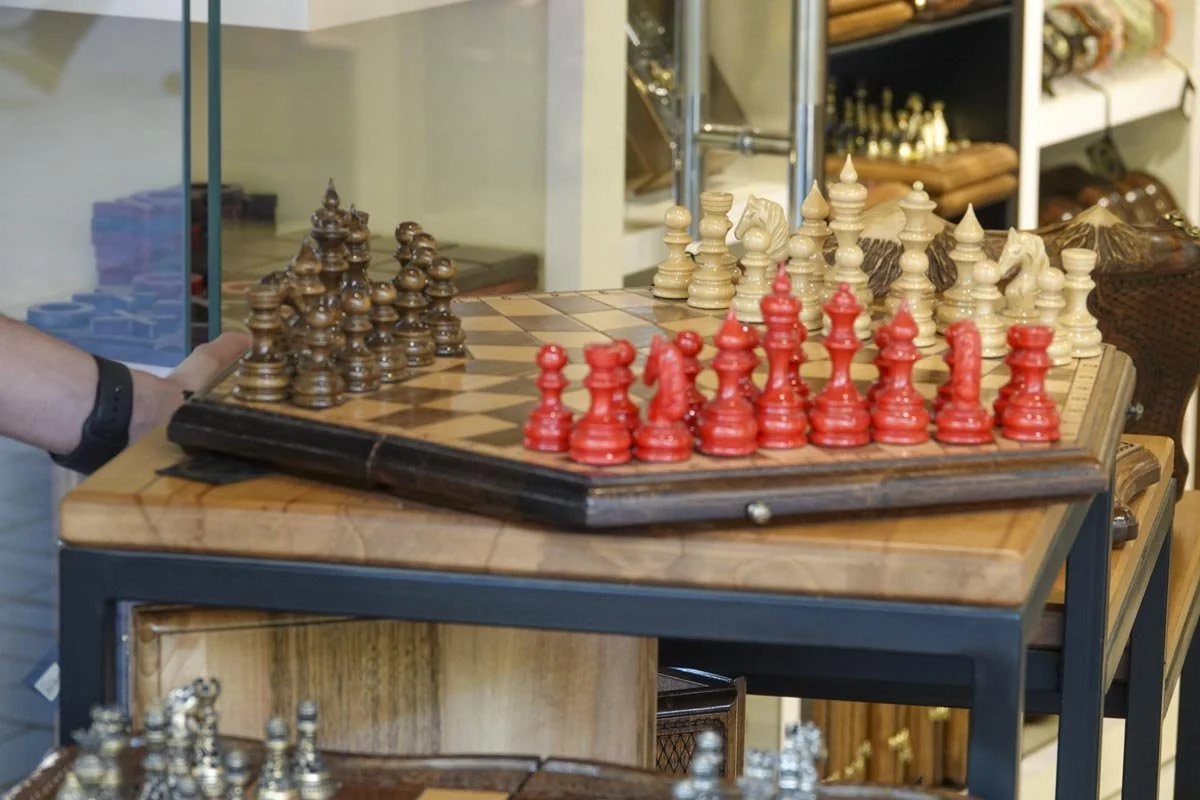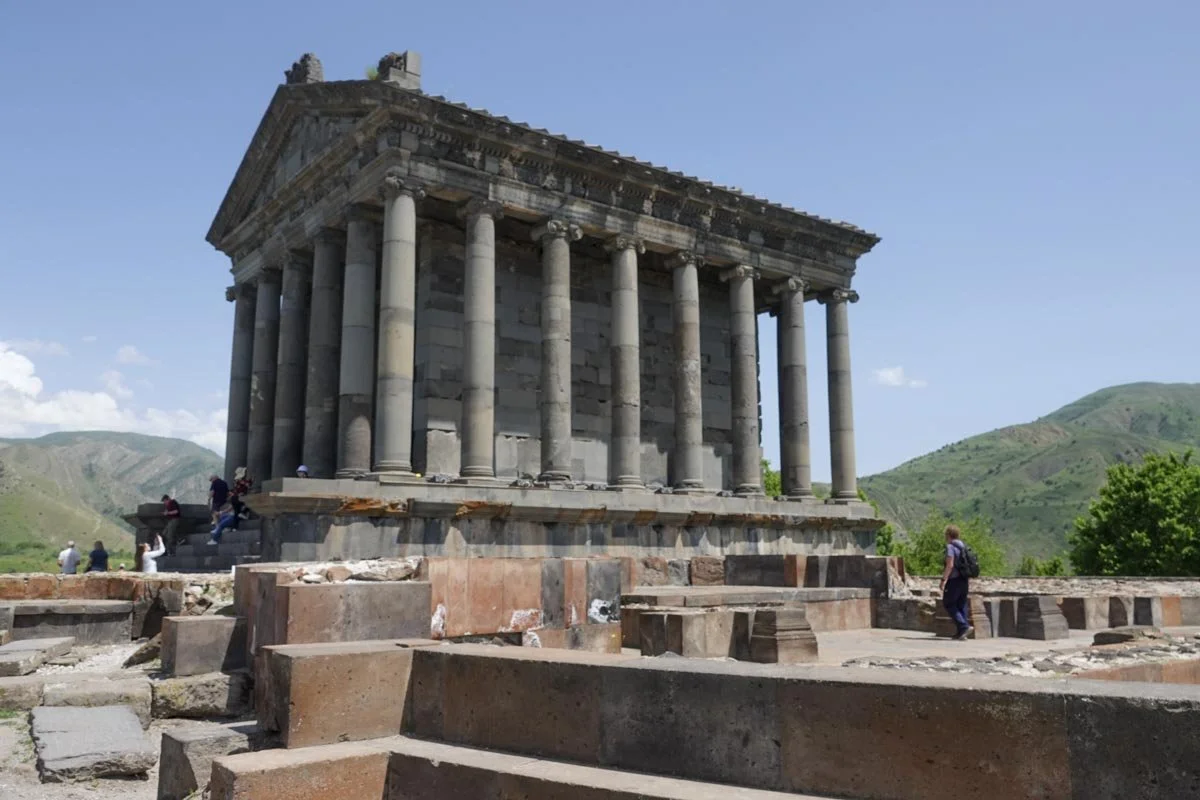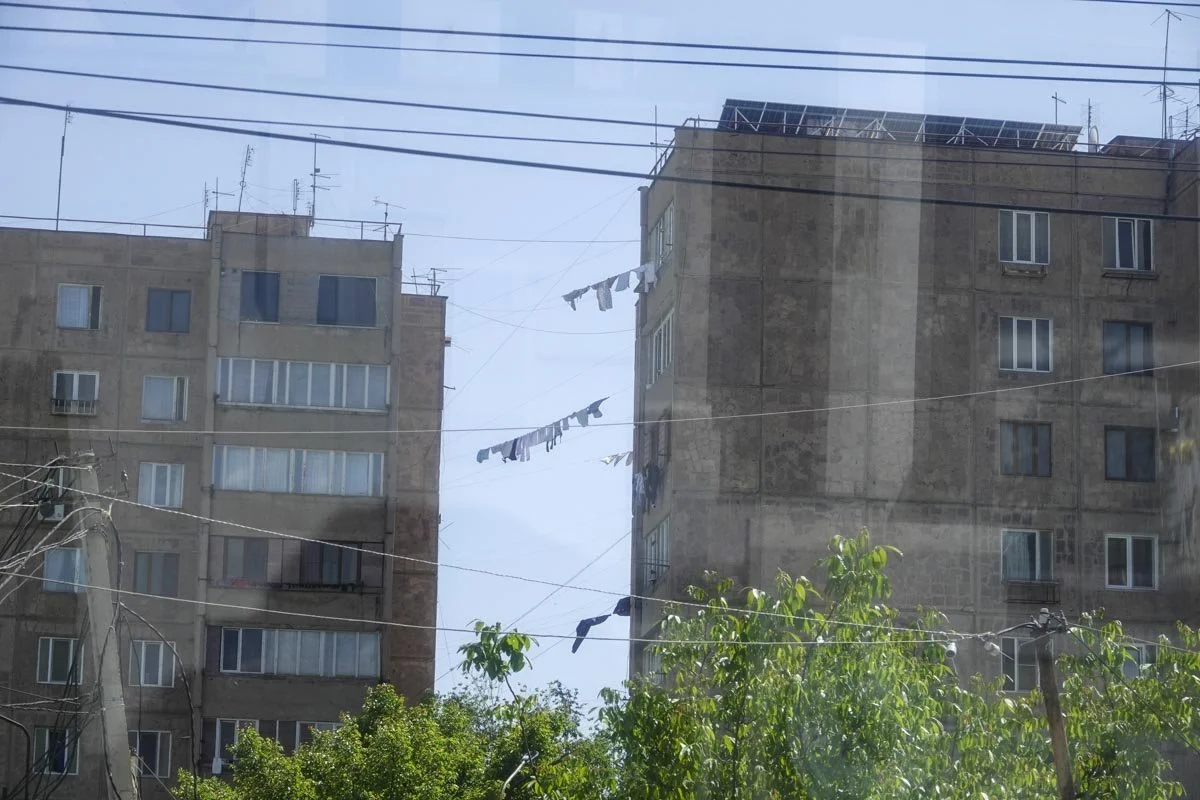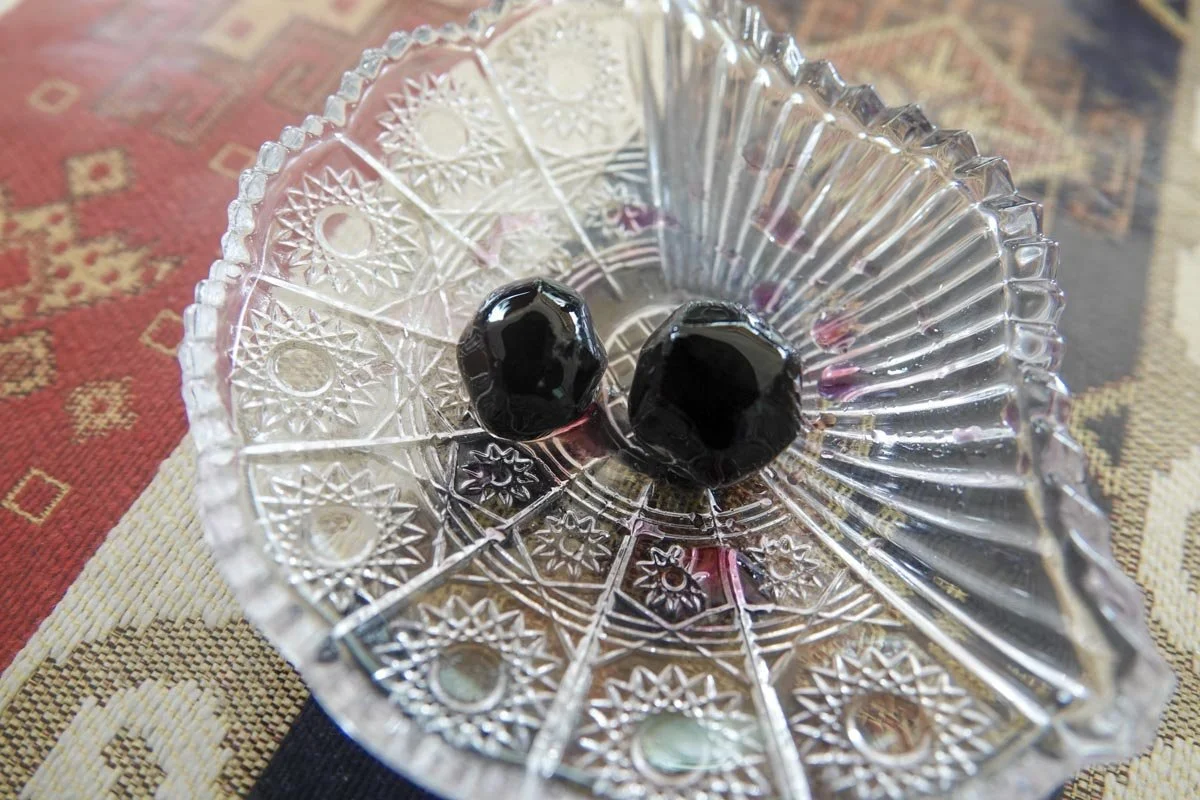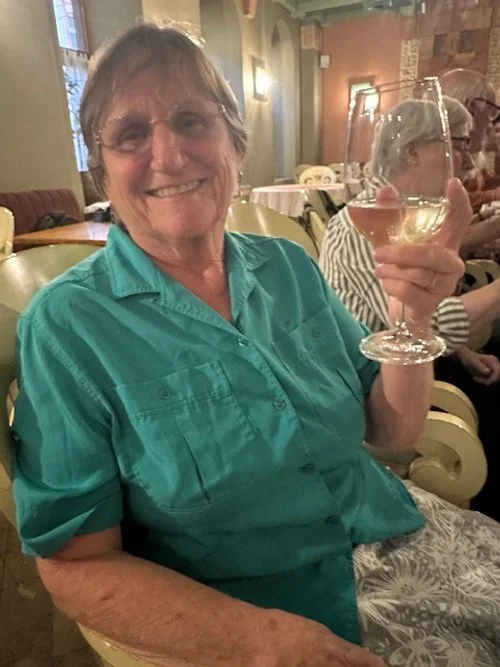Lunch and Learn
Our next stop this day was for lunch. But it was more than just eating lunch. This family started a business catering to tourist groups, right in their backyard. They have developed quite a business for themselves. It was 80 degrees on this day, but they had their grounds all set up for cool and comfort. It was a pleasant place to be on a warm day. You can see where we were below. Our table was right behind the table in the photo.
Before we got to sit down and eat, we had a working lesson in making 'Gata.' Gata is an Armenian pastry or sweet bread. There are evidently many variations in different regions of Armenia. In our case, Gata was flour, butter, and sugar. We were told that other fillings can be added to it such as nuts and such, but we didn't add anything to the insides. Ours was round and about a foot in diameter. You can see Vicky with our tutor to the left of Vicky.
Vicky finished up and then put our Gata on the holder to take to the oven. Gata was our dessert for our lunch.
As we entered the back yard for our lunch and learn, I noticed some large fish tanks. Our guide said to take a good look because I was looking at our main course for lunch. The fish tanks held both trout and sturgeon. We ended up having sturgeon. The trout are on top and sturgeon on the bottom.
Lunch was green onions, an eggplant dish, lavash bread, tabule, cheese, sturgeon (I had 3rds), potatoes, and Vicky's Gata for dessert with tea.





